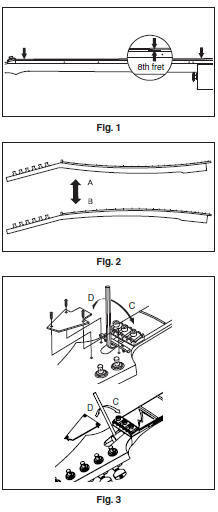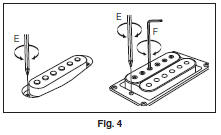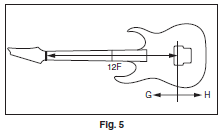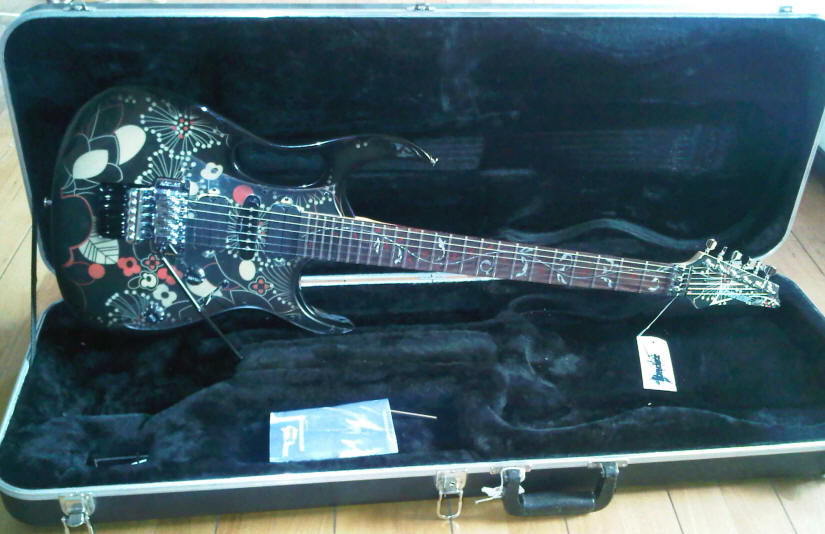Product Details:
|
Place of Origin |
Guangdong, China (Mainland) |
|---|---|
|
Brand Name |
Ibanes |
|
Model Number |
GRG 77FP-S |
|
Type |
Electric Guitar |
|
Fingerboard Material |
Rosewood |
|
Bow Material |
steel strings |
|
Body Material |
mahogany |
|
Back / Side Material |
Mahogany |
|
Colour Available |
BK with flower |
Payment & Shipping Terms:
|
Price: |
FOB USD 107.1~107.2 / Piece |
|---|---|
|
Minimum Order Quantity: |
12 Piece/Pieces Ibanes |
|
Port: |
HUANGPU |
|
Packaging Details: |
Cartons 110*60*35 550pcs/20 container Within 30 days after receive the deposit |
|
Delivery Time: |
If stock,send within 3days,if no stock,45days after deposit |
|
Payment Terms: |
T/T,Western Union,MoneyGram,Paypal,Escrow |
|
Supply Ability: |
2000 Piece/Pieces per Month |
| [photogallery/photo00012621/real.htm] | [photogallery/photo00016144/real.htm] |
|
ADJUSTING THE NECK The neck bears the tension of the strings. The curvature of the neck is subtly affected not only by the tuning state and string gauge, but also by changes in temperature and humidity. For this reason, the neck contains an internal truss rod that allows the curvature to be precisely adjusted. Tune the strings accurately, hold the guitar in playing position, then press the first string at the first fret and at the fret that is nearest to the point where the neck joins the body, as shown in Fig. 1. (It will be more convenient to use a capo at the first fret.) Measure the gap between the string and fret at the eighth fret. Do the same for the sixth (lowest) string. For each string, the gap should be in the range of 0.3-0.5 mm (a slight bow in the neck). Although symptoms may vary depending on the type of neck and on how the neck is joined to the body, problems such as excessive string height, string buzz for high notes, or intonation difficulties may occur due to an excessively bowed neck (Fig. 2 A), which will cause this gap to be larger. Conversely, problems such as insufficient string height, string buzz for low notes, or muted notes may be due to a neck that is bowed in the reverse direction (Fig. 2 B), which will cause this gap to be smaller. Try to refrain from simply making a visual judgment. Rather, determine the problem based on the symptoms that occur, and make the appropriate adjustment. The truss rod nut is located at the headstock end of the neck. Using the Allen wrench or socket wrench included with the guitar, tighten the nut toward the right (Fig. 3 C) if you want to bend the neck in the convex direction, or loosen the nut toward the left (Fig. 3 D) if you want to bend the neck in the concave direction. Make adjustments in quarter-turns, alternating steps of tuning and adjustment. Caution You must exercise appropriate care when adjusting the neck. If the truss rod nut does not turn as you expect, or if you are unable to make adjustments accurately, do not attempt to force the adjustment; contact your dealer or the Ibanez company.
|
 |
|
PICKUPS By adjusting the pickup height, you can make fine adjustments to the volume and tone. For a commonly used pickup height, adjust the adjustment screws (Fig. 4 E) on both sides of the pickup with a Phillip screwdriver to create a space of 2-5 mm between the pickup/pole piece and the strings pressed at the last fret. However, this adjustment will depend on your playing style or on the characteristics of your amp, so you should make this adjustment while listening to the actual sound. For pickups of the type that allows the pole piece to be adjusted, you can correct the volume balance for each string. (Note that you can only make adjustment within a given adjustment range.) Depending on the type of pole piece, use either an Allen wrench (Fig. 4 F) or a slot head screwdriver, whichever is suited for the pickups. The volume will increase as the distance between the pickup and string decreases, but if the spacing is too close, you may get cracked sounds or the string may buzz due to the magnetic field of the pickup. Conversely, increasing the distance between the string and pickup will produce a clearer sound with less distortion, but the high-frequency range may be attenuated and the volume may drop. For the LZ series of Ibanez active pickups, the pickup characteristics and equalizer balance are adjusted according to the model hosting them. It is designed to enable correct action to be taken by making correct combinations of the pickups installed on the guitar and the equalizer to be used. No other combination will work. Do not use this series with LZ pickups used with some other models or in conjunction with active pickups produced by other manufacturers. This is also applicable to equalizer selection. 8th fret
|
 |
|
BATTERY If your guitar has a built-in preamp or equalizer and requires a battery, you will need to replace the battery when you notice that the volume has decreased or the sound has become distorted. The battery is housed in a battery compartment or within the control cavity. (The location may differ depending on the model of the guitar.) Depending on the model, either 006P (9 V) battery or two AA (1.5 V x 2) batteries are used. When replacing the battery, check the orientation carefully to place it in the battery compartment or control cavity in the correct orientation. For a guitar that requires two batteries, do not mix old and new or alkaline and manganese batteries together. Also, do not use a battery whose voltage or shape is different from that of the initially installed one. For a guitar that requires a battery (batteries), the output jack also functions as a power switch, and the power will turn on when you insert a plug into the output jack. To prevent battery power leakage and depletion, remove the plug from your guitar if you will not be using it for an extended period of time. To prevent your amp or other equipment from being damaged when you plug in your guitar, turn off the power of your equipment or turn down the volume before you make connections. Caution The battery shipped with the guitar is for testing.
|
|
|
ADJUSTING THE INTONATION (string length) The fret position is set according to a calculation of the correct musical scale existing under certain conditions, referring to the scale from the nut to the bridge. However, conditions under which the guitar is played greatly vary depending on the thickness of strings, neck condition, and tuning. In order to correct subtle interval diversions arising from these differences, you will need to carry out fine adjustment for the string length (intonation adjustment). When replacing with new strings, or when adjusting the neck, be sure to adjust intonation. After completing adjustment of the neck or each section of the strings on the higher side, you should perform accurate tuning (use of a tuning meter is recommended). Hold it in playing position, and compare the pitch of the string pressed down at the 12th fret with the harmonic played at the 12th fret. If the pitch played at the 12th fret is lower than the harmonic, move the bridge saddle forward (Fig. 5 G) to shorten the string length. Conversely, if the pitch played at the 12th fret is higher than the harmonic, move the bridge saddle backward (Fig. 5 H) to lengthen the string length. The method of adjusting depends on the type of bridge your guitar has, so carry out adjustments referring to the adjustment manual for your bridge. Caution The string may break if the saddle is moved a substantial distance, so be sure to loosen the string before you adjust the saddle if a major adjustment is required.
|
 |
